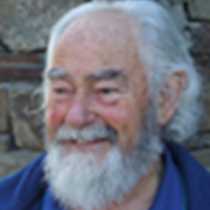The Dalles
We are headed westward, down the Columbia River, following the same course that the Corps of Discovery took in October of 1805. For part of today, our adventure has taken us off the Sea Bird for a quiet walk in the lovely autumn weather. Strolling along the Historic Columbia River Highway, on a portion designated for bicycling and walking only, we have the opportunity to stop and appreciate the trees as they begin to take on their colors of fall.
Once again, we are linked to the Lewis and Clark expedition as we see the Big Leaf Maple tree shown here. Meriwether Lewis collected and described it just downriver from where we found it. His observations were much more detailed than our own, and we admire his perspicacity as he detailed size, color, venation, presentation of seeds, and method of dispersal. We can only wonder how he could have been so objective when we know that he was soaking wet with rain, his tattered clothing hung in shreds, his moccasins provided little protection from the sharp rocks, and hunger was ever present.
In a moment of contemplation, we realize that our experience is much richer because those who have gone before us gave us their keen observations. Meriwether Lewis, as a pioneering naturalist, is one of those who have enriched our lives. We salute him across the years.
We are headed westward, down the Columbia River, following the same course that the Corps of Discovery took in October of 1805. For part of today, our adventure has taken us off the Sea Bird for a quiet walk in the lovely autumn weather. Strolling along the Historic Columbia River Highway, on a portion designated for bicycling and walking only, we have the opportunity to stop and appreciate the trees as they begin to take on their colors of fall.
Once again, we are linked to the Lewis and Clark expedition as we see the Big Leaf Maple tree shown here. Meriwether Lewis collected and described it just downriver from where we found it. His observations were much more detailed than our own, and we admire his perspicacity as he detailed size, color, venation, presentation of seeds, and method of dispersal. We can only wonder how he could have been so objective when we know that he was soaking wet with rain, his tattered clothing hung in shreds, his moccasins provided little protection from the sharp rocks, and hunger was ever present.
In a moment of contemplation, we realize that our experience is much richer because those who have gone before us gave us their keen observations. Meriwether Lewis, as a pioneering naturalist, is one of those who have enriched our lives. We salute him across the years.




